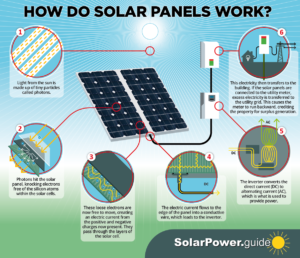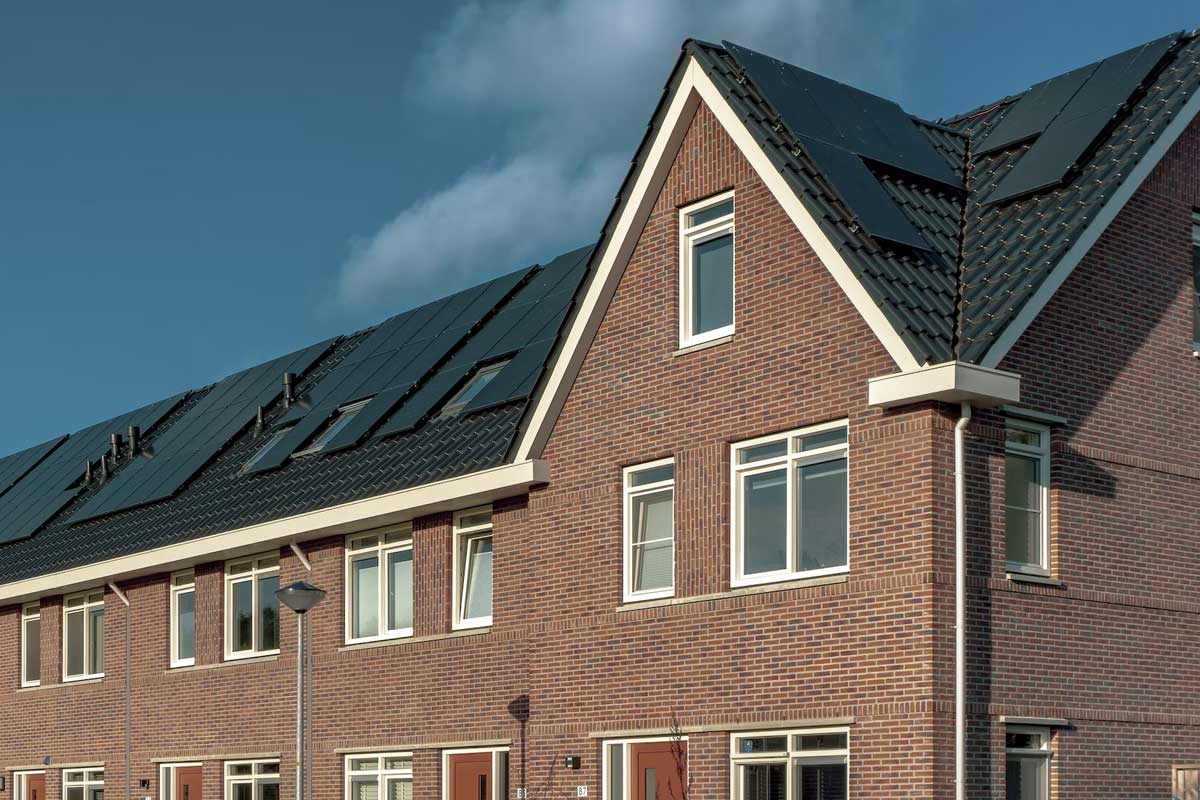12 Jul So, How Do Solar Panels Work?
Let’s start with the basics. Solar panels are devices that convert sunlight into electricity. They are made up of photovoltaic cells, which are the tiny units that convert sunlight into electrical energy. These cells are made of semiconductor materials such as silicon, which have the unique property of being able to convert sunlight into electricity.

This image was shared from Solar Energy Insights, by Solar Guide. Visit https://solarpower.guide/solar-energy-insights/how-do-solar-panels-work for more information.
When sunlight hits a solar panel, the photovoltaic cells inside the panel absorb the energy from the sun’s rays. This energy is then converted into direct current (DC) electricity, which is sent to an inverter. The inverter then converts the DC electricity into alternating current (AC) electricity, which can be used to power homes and businesses.
What is the technology behind how solar panels work?
As we mentioned earlier, solar panels are made up of photovoltaic cells. These cells are made of silicon, which is a semiconductor material that can convert sunlight into electricity.
There are two main types of silicon used in solar panels: monocrystalline and polycrystalline.
Monocrystalline silicon is made from a single, pure crystal of silicon. This type of silicon is more efficient at converting sunlight into electricity than polycrystalline silicon, but it is also more expensive.
Polycrystalline silicon, on the other hand, is made up of many small crystals of silicon. This type of silicon is less efficient than monocrystalline silicon, but it is also less expensive. Most solar panels on the market today are made from polycrystalline silicon.
Once the silicon is in place, the photovoltaic cells are wired together to form a solar panel. The panels are then mounted on a roof or other surface where they can be exposed to sunlight. The number of panels required depends on the amount of electricity needed to power a home or business.
The efficiency of a solar panel depends on a number of factors, including the amount of sunlight it receives, the temperature of the panel, and the quality of the silicon used in the photovoltaic cells. To maximize the efficiency of a solar panel system, it’s important to ensure that the panels are installed in a location where they receive as much sunlight as possible. This means that they should be mounted on a south-facing roof or surface with no obstructions such as trees or other buildings blocking the sunlight.
What are the benefits of using solar panels?
The most obvious benefit is that they produce clean energy. Unlike fossil fuels, which emit harmful greenhouse gasses into the atmosphere when burned, solar energy is clean and renewable. This means that it does not contribute to climate change or other environmental problems associated with traditional energy sources.
Another benefit of using solar panels is that they can save homeowners and businesses money on their energy bills. Once a solar panel system is installed, it can generate electricity for decades without any additional costs. In fact, many homeowners who install solar panels see a significant reduction in their energy bills within the first few months of using them. There is even a federal tax credit for installing solar panels on your home.
Solar panels are also becoming increasingly popular because they can increase the value of a home. Homes with solar panel systems installed are often more attractive to potential buyers because they offer the prospect of lower energy bills and a smaller environmental footprint.
Interested in learning more about solar panel technology? Talk to one of our experts today.

